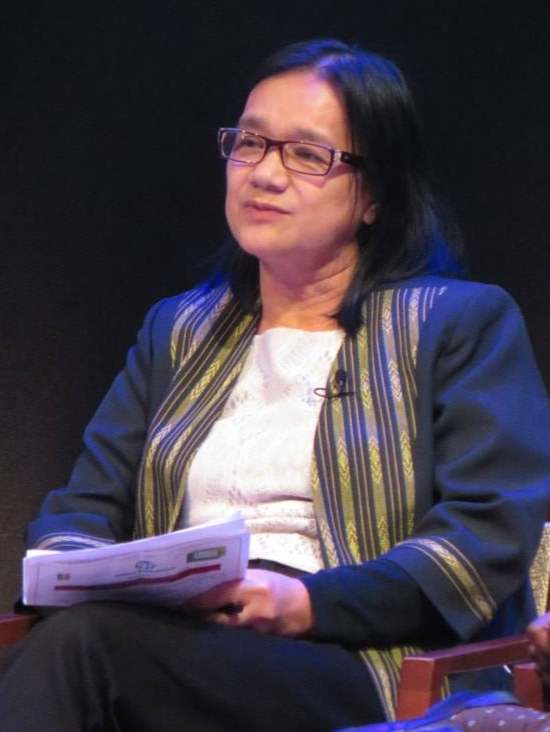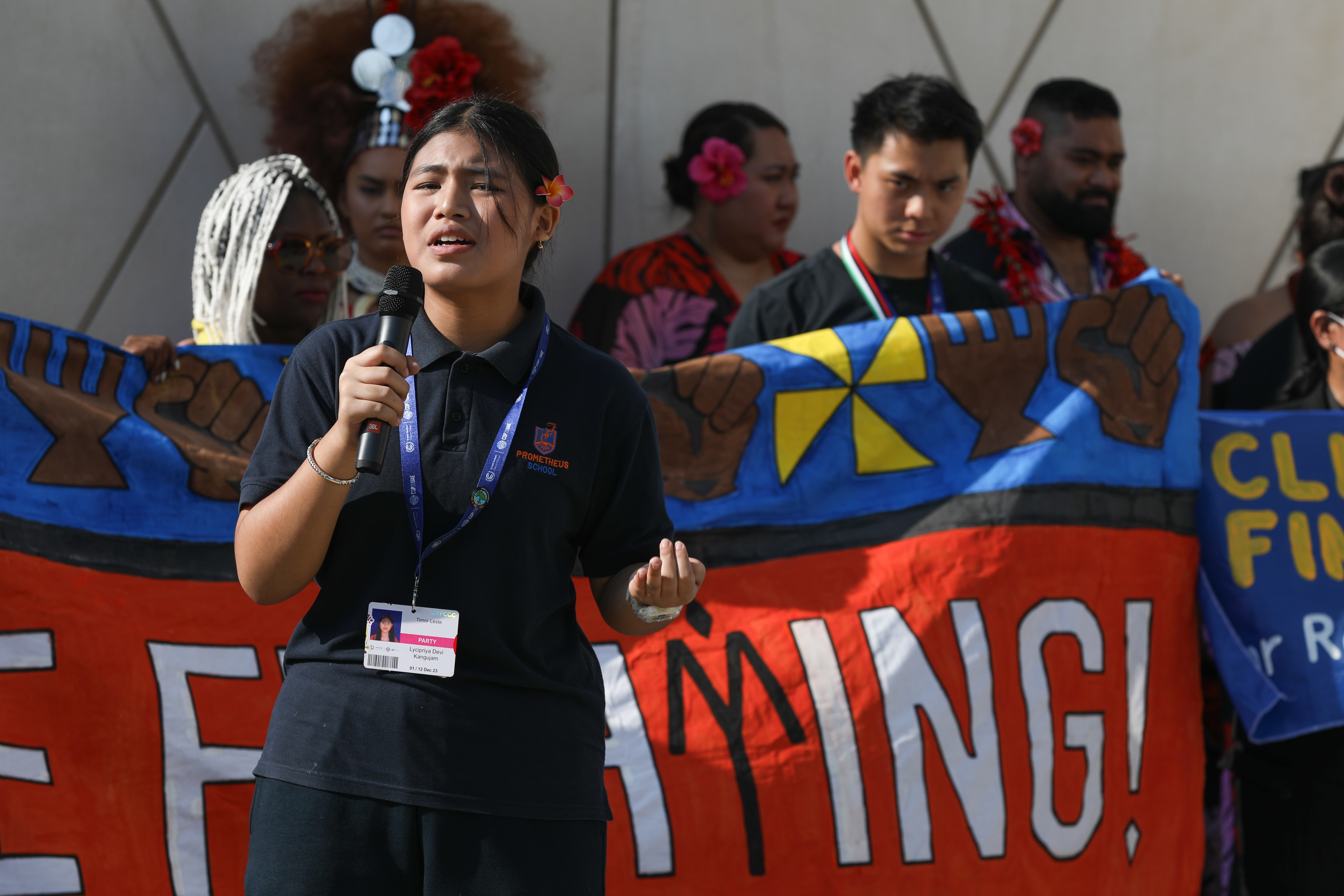The participation of young Indigenous leaders in both national and global climate and biodiversity talks will be crucial for the long-term protection of forests and to help the world meet its climate goals, according to a senior advocate of Indigenous Peoples rights.
Grace Balawag, assistant co-ordinator for the climate and biodiversity programme at Tebtebba (Indigenous Peoples’ International Centre for Policy Research and Education) said recognizing the rights and traditional knowledge of Indigenous Peoples (IPs) should always be the focus in conservation and climate talks but including young IPs will help ensure the long-term success of any agreements.
“One thing we have been integrating, is providing capacity building for the younger generation of Indigenous Peoples’ leadership, so they can take on these processes,” said Balawag, speaking ahead of International Day of the World's Indigenous Peoples on 9 August.
On capacity building, Balawag cited trainings on Indigenous Peoples’ sustainable self-determined development, which covers the multiple crises faced by IPs, such as climate change and biodiversity loss, related political-economic issues and international human rights standards.
“As we know, (these talks) are very gradual and slow, and may take some more years or generations to reach agreement for some of our advocacy and negotiation priorities,” added Balawag, a Kankanaey-Igorot Indigenous woman from the Mountain Province, Philippines.
One of the items being negotiated by countries as part of the Paris climate accord is Article 6, which allows countries to voluntarily co-operate with other countries to meet their national emissions reduction targets – including carbon markets.
Given that carbon projects are still a relatively new means of raising conservation funding and their future success depends on the involvement of IPs and communities, involving young IP leaders would have long-term benefits and improve their integrity.
The world's forests have come under threat in recent decades due to clearing for logging and agriculture – including crops like palm oil and soybeans, as well as livestock grazing, pulp and paper expansion, mining, infrastructure and urbanization.
Be it logging or agriculture expansion, forests are often seen as a means to boost economic activity – be it at a local or national level - in developing countries, where deforestation laws and land rights can be lacking or difficult to enforce.
Approximately 70 million indigenous people are long-time dwellers and curators of vast expanses of forests across the world, according to the UN-REDD Programme.
About 36 percent of the world’s remaining intact forests are on Indigenous Peoples’ lands, and these communities safeguard 80 percent of the world’s remaining biodiversity, the World Bank says.
Therefore, IPs and local communities are crucial stakeholders – as well as rights holders – in the implementation of the Paris Agreement.
“One thing we have been integrating, is providing capacity building for the younger generation of Indigenous Peoples’ leadership, so they can take on these processes."
-Grace Balawag | Assistant co-ordinator for the climate and biodiversity programme, Tebtebba

“It is important for young IP leaders to be included in national and international climate agreements, as we are the emerging leaders of Indigenous communities."
-Asami Segundo | ICCA Consortium and International Indigenous Youth Forum on Climate Change.
The United Nations Climate Change Conference or Conference of Parties more commonly known as COP29, is due to be held later this year in Baku, Azerbaijan, and Balawag said involving Indigenous young leaders will be hugely important for the event.
While IPs play a vital role in forest protection, due to their traditional knowledge and sustainable management of their lands, they receive less than 1 percent of global climate aid, according to the Rainforest Foundation Norway.
“It is important for young IP leaders to be included in national and international climate agreements, as we are the emerging leaders of Indigenous communities,” said Asami Segundo of the ICCA Consortium and International Indigenous Youth Forum on Climate Change.
“We need to be heard on what kind of future we want and how we can contribute towards its realization,” added Segundo, who is a member of the Kalanguya-Ikalahan indigenous community from the northern Philippines
The 30-year-old said the participation of young IPs was also an opportunity to exchange knowledge with elders who already have experience in climate talks.
The UN-REDD Programme for forest protection, has put in place safeguards to ensure IPs are involved in the decision-making processes, while their rights are protected. IPs’ involvement and consent are a vital component for results-based payments for emissions reductions.
Balawag said countries who provide resources for capacity building for Indigenous Peoples allows IP groups to focus on the training of the younger generation, enabling them to participate in national and global discussions on climate and nature.
She said during national climate and biodiversity strategy, action and adaptation planning meetings, more IPs are bringing “our young leaders, so they are also updated”, but more resources are needed for them to participate to the same level in in COP discussions.
“Under the UNFCCC (United Nations Framework Convention on Climate Change) and CBD (Convention on Biological Diversity), the state parties have prioritized involving youths in the processes,” said Balawag, who was previously an Indigenous Peoples’ observer in the UN-REDD executive board.
“This is an opportunity for us to bring in Indigenous young leaders we have identified,” she said, adding that the International Indigenous Peoples Forum on Climate Change (IIPFCC), with Balawag as one of the Co-Chairs, recently helped organized an Indigenous youth forum for climate change under the guidance of the IIPFCC.
“We work very closely with youth and women organizations in climate change processes because we have common concerns in integrating human rights approaches in climate change actions and measures,” said Balawag.
“We know that we must work more on collaborative efforts with other constituencies in our advocacies.”
Photo Credit: UNFCCC | Grace Balawag




